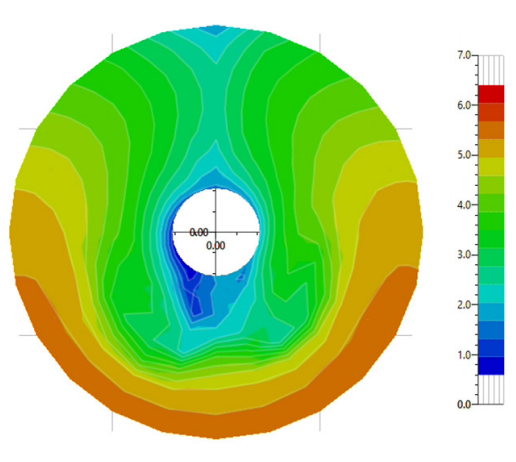Propeller noise is a rapidly expanding area of research, but what are the underlying principles? HydroComp’s Don MacPherson gives a primer
Late November is a cold time in Halifax, Nova Scotia, but for two days last year it was the hotspot for a gathering of marine professionals, ship operators, academics, and representatives from government and other regulatory agencies to discuss ship noise mitigation. Hosted by CISMaRT (www.cismart.ca) and supported by Transport Canada, the workshop provided a setting for training, discussion, and collaboration. As a participant at the event, I found it to be an outstanding overview of the state-of-the-art in many aspects of Underwater Radiated Noise (URN), yet there were also a few things that surprised me.
While all seemed to appreciate and accept that propellers are the dominant source of detrimental ship-generated radiated noise, it became clear that the mechanism of propeller-driven noise is not well understood at all. I hope to use this article to offer a “practical primer” on this topic. (I also am intentionally avoiding any discussion about the social and environmental impact of noise. There are others much more qualified to speak about this). Let me acknowledge that I am not an acoustic expert, just a practitioner (albeit one with a special interest in the topic and experience in hydrodynamic systems) that is driven to peak behind the curtain.
Three-part harmony
SLAM! Now it’s your turn. Take your hand and slap your desk. Why you hear any noise at all is the result of a three-part system of Excitation, Transmission, and Response.
- Excitation is the source of the noise. It is your hand slapping the desk.
- Transmission is the highway for the energy that propagates from the source. In this case, air provides the fluid pathway, but the medium for transmission could be gas, liquid, or solid as long as it has some elasticity.
- Response is how your body accepts and responds to the energy from the transmission fluid. The eardrum picks up the fluid motions and converts it into signals that your brain processes.
Every such system is unique, but they all more-or-less follow a similar framework. Let’s first distinguish between sound and noise. Sound is the term for the physical process, the conversion of source energy into a response. Noise is simply disruptive or unwanted sound, and admittedly, this can be a very subjective term (as a bagpiper, I am frequently reminded of the distinction…).
Now in professor-speak: Sound is a vibratory mass fluctuation that travels through an elastic medium.
But wait, I just slapped my desk once? How is this vibratory? Even though the sound is processed as a single “burst” it is in fact made up of a spectrum of vibratory subsets at very tiny time scale. The energy from your single impact caused the spring-damper system that is your desk to vibrate and reflect the fluid back to you. The nature of this sound depends not just on the impact energy, but on the physical characteristics of the impact site. Not quite sure? Slap a pillow… While there is indeed a whisper of noise from the mass being moved by your hand, it is a fraction of the sound energy that was reflected by the desk – and at a differing frequency as well.
OK, now set off a firecracker on your desk. Just kidding! Don’t try this at home. But it does provide an illustration of a different kind of sound generation – the direct mass fluctuation of the fluid via an explosive expansion or contraction within a very, very small time frame. The thunder created by a lightning’s instantaneous heating of air is another such example.
Propeller-driven noise
This sets the stage for a deeper understanding of propeller-driven noise. There are two noise sources in play here – non-cavitating and cavitating – and they are similar to the two described above. Frequency of noise Propeller-driven noise sources most significantly occur at each blade’s passing though a region of slower water – hence the name “blade rate” or “blade pass” frequency (BPF). The BPF is the principal frequency of noise generation, with its first two or three multiples as additional significant frequencies.
As a propeller blade rotates through its circumferential path, it passes incoming water which are at different velocities – its “wake field”. Figures 1 and 2 show examples of differing water velocities and how boundary layers on hull and appendages can create this non-uniform inflow. Oblique flow due to shaft angle can also be a major contributor to variation in the wake field.
Frequency is an important consideration in the “radiated” part of URN, as lower frequency pressure wave systems can travel much farther than those at higher frequencies. This means that the region of potential acoustic “damage” is much farther away from the source. There is also some …
Learn more about the latest developments in propeller noise research from the May 2019 edition of The Naval Architect!
Download the full article, here

